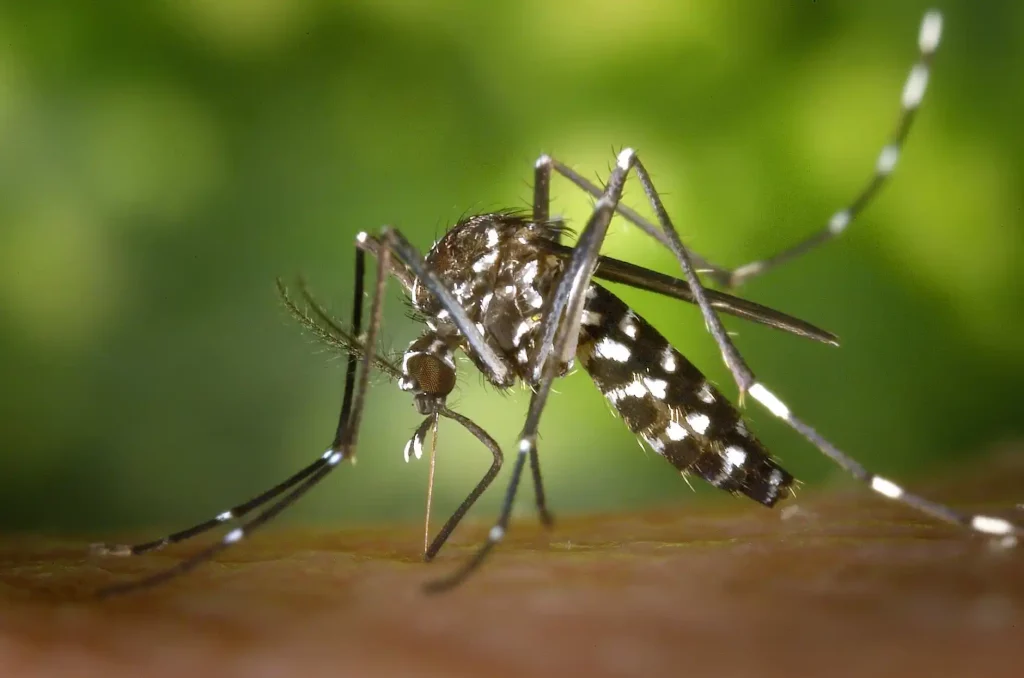The mosquito-infested world of dengue vs. malaria. Discover the key differences between these fevers in a casual and easy-to-understand way. When it comes to mosquito-borne illnesses, two names often spring to mind: dengue and malaria. While these tropical diseases share a common mode of transmission, they are distinct in their causes, symptoms, and progression. In this comprehensive guide, we’ll delve into the differences between dengue and malaria to equip you with essential knowledge about these potentially life-threatening conditions.

Dengue: Unveiling the Viral Culprit
Dengue fever is a viral disease caused by the Dengue virus, a member of the RNA flavivirus family. The Dengue virus boasts four distinct subtypes, with a unique twist – infection with one subtype does not provide immunity against the other three. This clever little virus relies on the Aedes mosquito as its transmission vehicle, hopping from one human host to another.

Dengue Symptoms:
- Fever: One of the earliest symptoms of dengue, fever typically sets in about three days after infection and subsides after two to three days.
- Joint Pain, Muscle Pain: Patients often report aches and pains in their joints and muscles.
- Skin Reddening, Pin-Point Bleeding Patches: These skin manifestations, along with conjunctival redness, are characteristic of dengue.
- Abdominal Pain: Abdominal discomfort is a common sign that signals the transition to the critical phase of dengue.
However, the hallmark of dengue is the leakage of fluids from blood vessels, which can lead to a range of complications. During the critical phase, individuals might experience low blood pressure (hypotension), low pulse pressure, poor renal perfusion, poor urine output, and the collection of fluids in the pleural and peritoneal cavities Dengue vs. Malaria.

Key Blood Count Indicators:
- Platelet Count: A platelet count of less than 100,000 is suggestive of dengue.
- Packed Cell Volume: The packed cell volume rises above 40% at the onset of the disease.
- White Cell Count: Initially, there’s a drop in the white cell count.

Treatment for Dengue:
Unlike some viral infections, antiviral drugs are not typically indicated for dengue. Instead, the focus of treatment is on providing supportive care, including hydration and fever management.
Malaria: The Parasitic Predicament
Malaria, in contrast, is a parasitic disease caused by the Plasmodium protozoa, which comes in three main types: Plasmodium falciparum, Plasmodium ovale, and Plasmodium malariae. Malaria’s transmission involves female Anopheles mosquitoes injecting the Plasmodium protozoa into the bloodstream. Once inside the red blood cells, the parasites multiply and eventually destroy the host cell. This entire cycle typically spans three days, leading to a characteristic three-day fluctuating fever pattern.

Malaria Symptoms:
- Fluctuating Fever Pattern: Malaria’s fever follows a benign tertian pattern, occurring every 48 hours.
- Hemolytic Anemia: The destruction of red blood cells results in anemia.
- Liver Involvement: After the red blood cell phase, the protozoa migrate to the liver, causing liver cell death, and sometimes, liver failure. This can manifest as yellowish discoloration of the mucous membranes.
Unlike dengue, vs. malaria does not involve fluid leakage from blood vessels, and platelet counts remain unaffected.

Differentiating Dengue vs. Malaria:
- Dengue is viral, whereas malaria is parasitic in nature Dengue vs. Malaria.
- The fever patterns are distinct: Dengue features an initial fever followed by a critical phase, while malaria follows a benign tertian pattern.
- Dengue involves fluid leakage, which is not observed in malaria.
- Platelet counts decrease in dengue, but not in malaria.
- Eosinophil leukocytosis might be seen in malaria, while dengue typically causes leukocytopenia.
Causes of Dengue and Malaria:
Dengue is caused by the Dengue virus, a flavivirus, transmitted through the Aedes mosquito. Dengue vs. Malaria on the other hand, is caused by Plasmodium protozoa and is transmitted by female Anopheles mosquitoes Dengue vs. Malaria.
Understanding Malaria:
Malaria follows a complex life cycle that includes a phase within red blood cells and subsequent multiplication in the liver. This intricacy can result in severe complications, such as cerebral malaria, if left untreated. Effective drugs, including quinolones, quinine, and chloroquine, are available for malaria treatment.
By being aware of the distinctions between dengue vs. malaria, you can make informed decisions about prevention and seek prompt medical care when needed. In regions where these diseases are prevalent, it’s essential to consult a healthcare professional for accurate diagnosis and appropriate treatment.
In summary, both dengue vs. malaria are significant health concerns in tropical regions, and understanding their differences is key to effective management and treatment. Stay informed, take precautions to avoid mosquito bites, and seek medical attention if you suspect you may have been infected with either of these illnesses. Your health and well-being depend on it.
